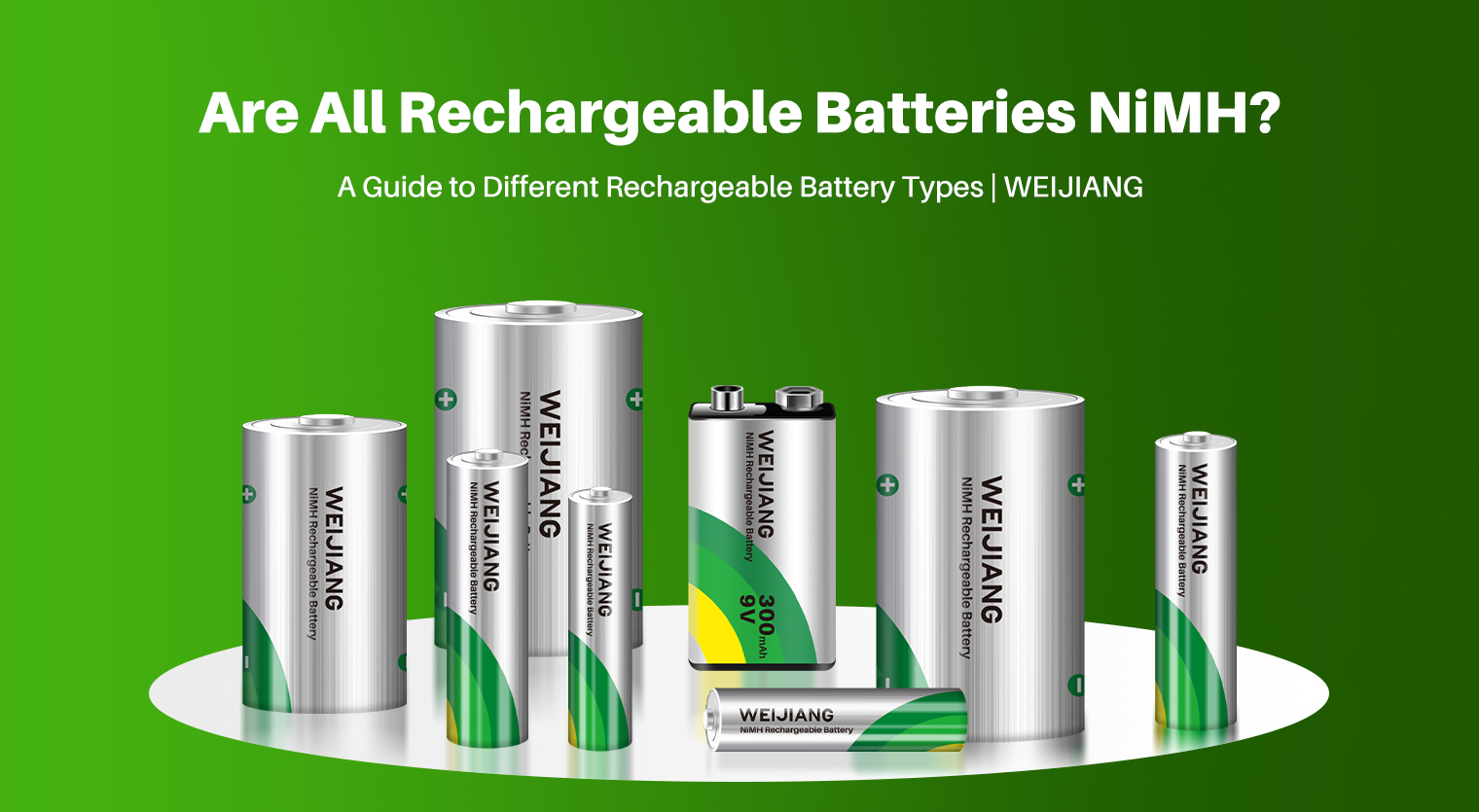Rechargeable batteries have revolutionized the way we power our portable electronic devices. One common misconception is that all rechargeable batteries are Nickel-Metal Hydride (NiMH) batteries. However, there are various types of rechargeable batteries available on the market, each with its unique characteristics and applications. In this article, we will explore different rechargeable battery types beyond NiMH, providing valuable insights into their features, advantages, and common uses.

Nickel-Metal Hydride (NiMH) Batteries
NiMH batteries have gained popularity due to their versatility and ability to replace disposable alkaline batteries in many devices. They have a higher energy density than older Nickel-Cadmium (NiCd) batteries and are considered more environmentally friendly. NiMH batteries are commonly used in consumer electronics, such as digital cameras, portable gaming devices, and power tools.
Lithium-Ion (Li-ion) Batteries
Lithium-ion (Li-ion) batteries have become the go-to choice for many portable electronic devices due to their high energy density, lightweight design, and longer lifespan. They offer excellent performance and are widely used in smartphones, laptops, tablets, and electric vehicles. Li-ion batteries can store a significant amount of energy and provide consistent power output throughout their discharge cycle.
Lithium Polymer (LiPo) Batteries
Lithium Polymer (LiPo) batteries are a type of lithium-ion battery that utilizes a polymer electrolyte instead of a liquid electrolyte. This design allows for flexible and lightweight battery configurations, making them ideal for slim devices like smartphones, smartwatches, and drones. LiPo batteries offer high energy density and can deliver high discharge rates, making them suitable for applications that require bursts of power.
Nickel-Cadmium (NiCd) Batteries
While Nickel-Cadmium (NiCd) batteries have been largely replaced by newer technologies, they are still used in specific applications. NiCd batteries are known for their durability, ability to withstand extreme temperatures, and long cycle life. However, they have a lower energy density compared to NiMH and Li-ion batteries. NiCd batteries are commonly found in medical devices, emergency backup systems, and certain industrial applications.
Lead-Acid Batteries
Lead-acid batteries are one of the oldest rechargeable battery technologies. They are known for their robustness, affordable price, and ability to deliver high currents. Lead-acid batteries are commonly used in automotive applications, providing the power needed to start the engine. They are also used in standby power systems, such as uninterruptible power supplies (UPS) and backup generators.
Conclusion
Not all rechargeable batteries are NiMH batteries. While NiMH batteries are widely used in consumer electronics, other rechargeable battery types offer unique characteristics and advantages for specific applications. Lithium-ion (Li-ion) batteries dominate the portable electronic market due to their high energy density and longer lifespan. Lithium Polymer (LiPo) batteries provide flexibility and lightweight design, while Nickel-Cadmium (NiCd) batteries and Lead-Acid batteries find their uses in specific industries. Understanding the different rechargeable battery types allows consumers to make informed decisions based on their specific needs and device requirements.
Post time: Dec-27-2023





